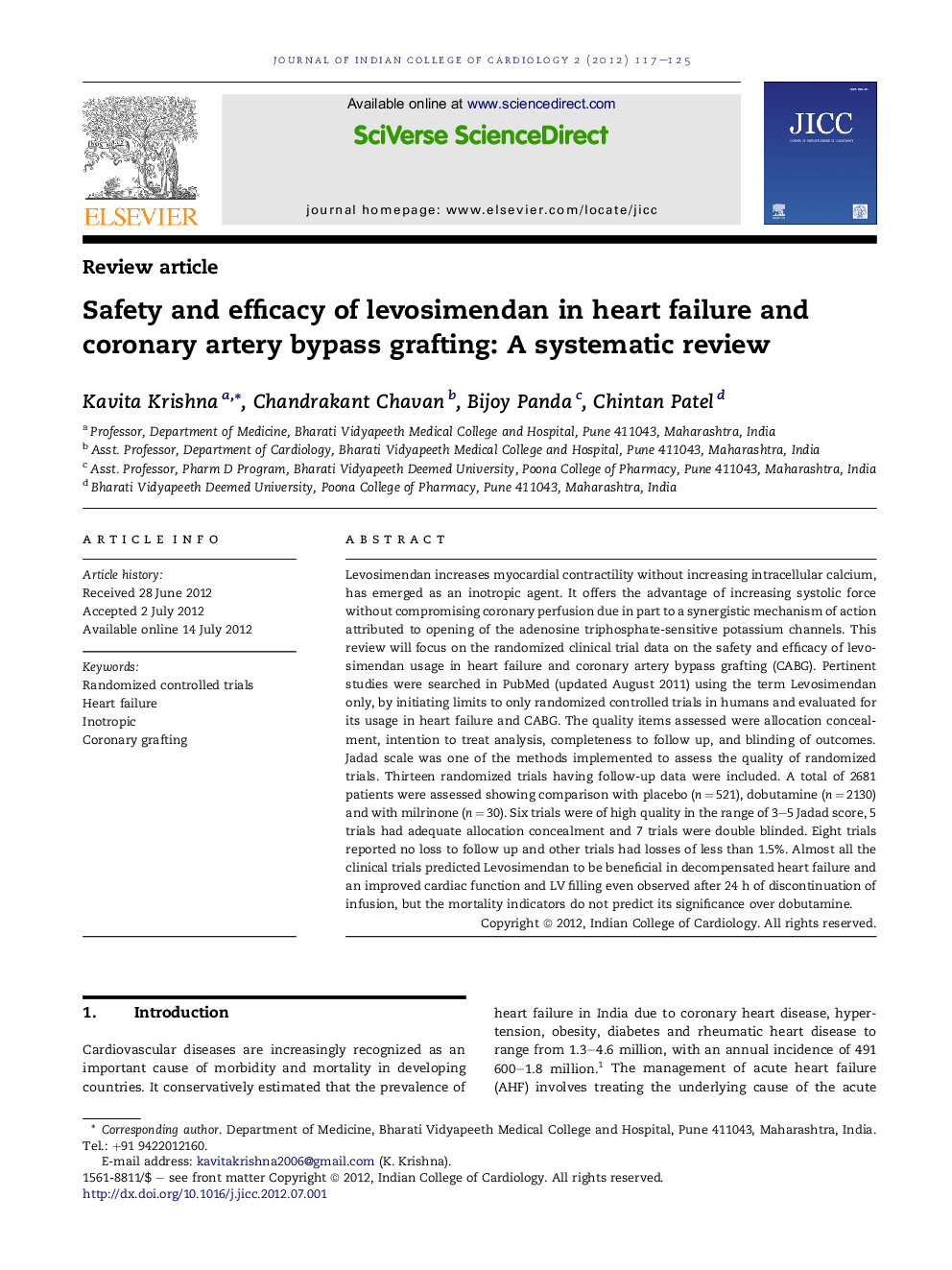| Article ID | Journal | Published Year | Pages | File Type |
|---|---|---|---|---|
| 2973977 | Journal of Indian College of Cardiology | 2012 | 9 Pages |
Levosimendan increases myocardial contractility without increasing intracellular calcium, has emerged as an inotropic agent. It offers the advantage of increasing systolic force without compromising coronary perfusion due in part to a synergistic mechanism of action attributed to opening of the adenosine triphosphate-sensitive potassium channels. This review will focus on the randomized clinical trial data on the safety and efficacy of levosimendan usage in heart failure and coronary artery bypass grafting (CABG). Pertinent studies were searched in PubMed (updated August 2011) using the term Levosimendan only, by initiating limits to only randomized controlled trials in humans and evaluated for its usage in heart failure and CABG. The quality items assessed were allocation concealment, intention to treat analysis, completeness to follow up, and blinding of outcomes. Jadad scale was one of the methods implemented to assess the quality of randomized trials. Thirteen randomized trials having follow-up data were included. A total of 2681 patients were assessed showing comparison with placebo (n = 521), dobutamine (n = 2130) and with milrinone (n = 30). Six trials were of high quality in the range of 3–5 Jadad score, 5 trials had adequate allocation concealment and 7 trials were double blinded. Eight trials reported no loss to follow up and other trials had losses of less than 1.5%. Almost all the clinical trials predicted Levosimendan to be beneficial in decompensated heart failure and an improved cardiac function and LV filling even observed after 24 h of discontinuation of infusion, but the mortality indicators do not predict its significance over dobutamine.
